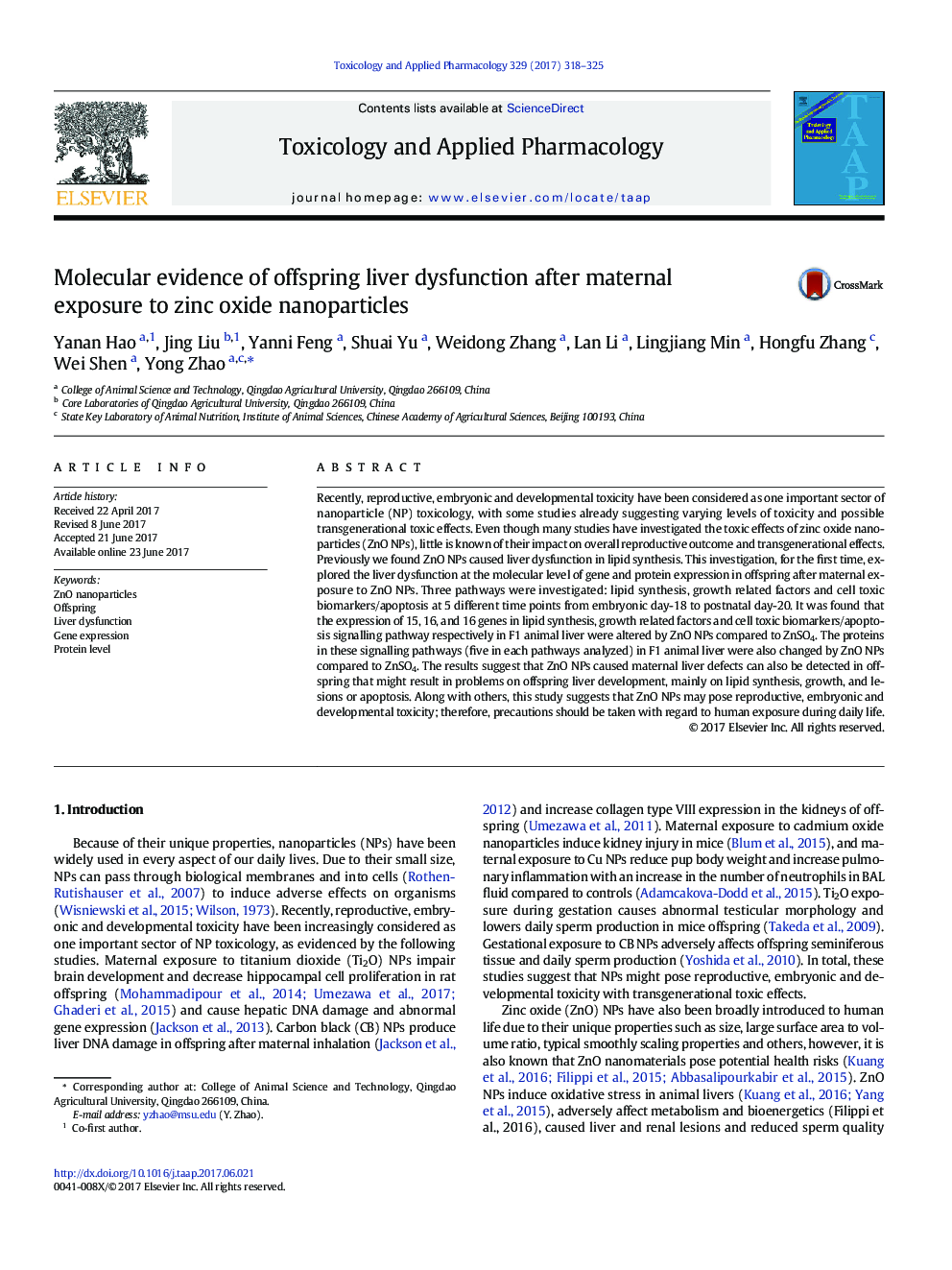| کد مقاله | کد نشریه | سال انتشار | مقاله انگلیسی | نسخه تمام متن |
|---|---|---|---|---|
| 5558364 | 1561133 | 2017 | 8 صفحه PDF | دانلود رایگان |
- Oral ZnO NPs exposure caused abnormal gene and protein expression in offspring liver.
- Oral ZnO NPs exposure could induce inheritance impacts on liver development.
- Oral ZnO NPs exposure could be considered as developmental hazardous material.
Recently, reproductive, embryonic and developmental toxicity have been considered as one important sector of nanoparticle (NP) toxicology, with some studies already suggesting varying levels of toxicity and possible transgenerational toxic effects. Even though many studies have investigated the toxic effects of zinc oxide nanoparticles (ZnO NPs), little is known of their impact on overall reproductive outcome and transgenerational effects. Previously we found ZnO NPs caused liver dysfunction in lipid synthesis. This investigation, for the first time, explored the liver dysfunction at the molecular level of gene and protein expression in offspring after maternal exposure to ZnO NPs. Three pathways were investigated: lipid synthesis, growth related factors and cell toxic biomarkers/apoptosis at 5 different time points from embryonic day-18 to postnatal day-20. It was found that the expression of 15, 16, and 16 genes in lipid synthesis, growth related factors and cell toxic biomarkers/apoptosis signalling pathway respectively in F1 animal liver were altered by ZnO NPs compared to ZnSO4. The proteins in these signalling pathways (five in each pathways analyzed) in F1 animal liver were also changed by ZnO NPs compared to ZnSO4. The results suggest that ZnO NPs caused maternal liver defects can also be detected in offspring that might result in problems on offspring liver development, mainly on lipid synthesis, growth, and lesions or apoptosis. Along with others, this study suggests that ZnO NPs may pose reproductive, embryonic and developmental toxicity; therefore, precautions should be taken with regard to human exposure during daily life.
119
Journal: Toxicology and Applied Pharmacology - Volume 329, 15 August 2017, Pages 318-325
